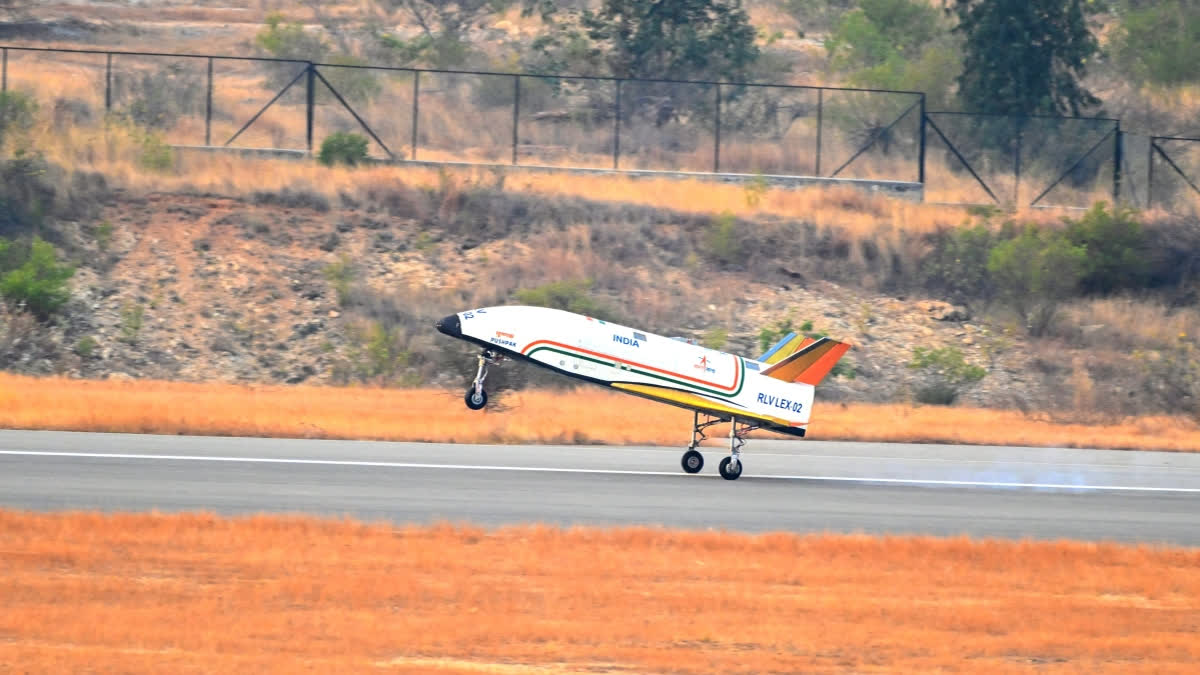Chennai: The Indian Space Research Organisation (ISRO) on Friday successfully carried out the landing mission of its Reusable Launch Vehicle (RLV)/rocket named 'Pushpak' from the Aeronautical Test Range (ATR) in Karnataka’s Challakere.
According to Indian Space Research Organisation (ISRO), the RLV LEX-2 demonstrated the autonomous landing capability from off-nominal initial conditions at the release from a helicopter.
The latest mission by ISRO, was the third landing mission of the RLV named after the legendary spaceship named in the Ramayan. ISRO had successfully carried out previous missions in 2016 and April last year.
The 'Indian space shuttle’ the winged Pushpak was lifted by an Indian Air Force helicopter and was released from 4.5 km altitude. Post release, Pushpak at a distance of 4 km on its own approached the runway along with cross-range corrections.
Pushpak landed precisely on the runway and came to a halt using its brake parachute landing gear brakes and nose wheel steering system, the Indian space agency said.
“The mission successfully simulated the approach and high speed landing conditions of RLV returning from space. With this second mission, ISRO has revalidated its indigenously developed technologies in the areas of navigation, control systems, landing gear and deceleration systems essential for performing a high speed autonomous landing of a space returning vehicle,” ISRO said.
The mission was achieved by ISRO’s Vikram Sarabhai Space Centre (VSSC) along with the Liquid Propulsion System Centre and the ISRO Inertial Systems Unit. The Indian space agency collaborated with various other government agencies including the Indian Air Force(IAF).
The Reusable Launch Vehicle – Technology Demonstrator (RLV-TD) is one of ISRO's most technically demanding projects. The goal of the RLV-TD is to develop technologies essential for a full reusable launch vehicle, thus reducing the costs of space missions. The RLV-TD’s design is similar to that of an aircraft, but it combines the complexity of a launch vehicle and an aircraft. It serves as the flying test bed for various technologies, such as hypersonic flight and autonomous landing, as well as powered cruise flight.
Read More



